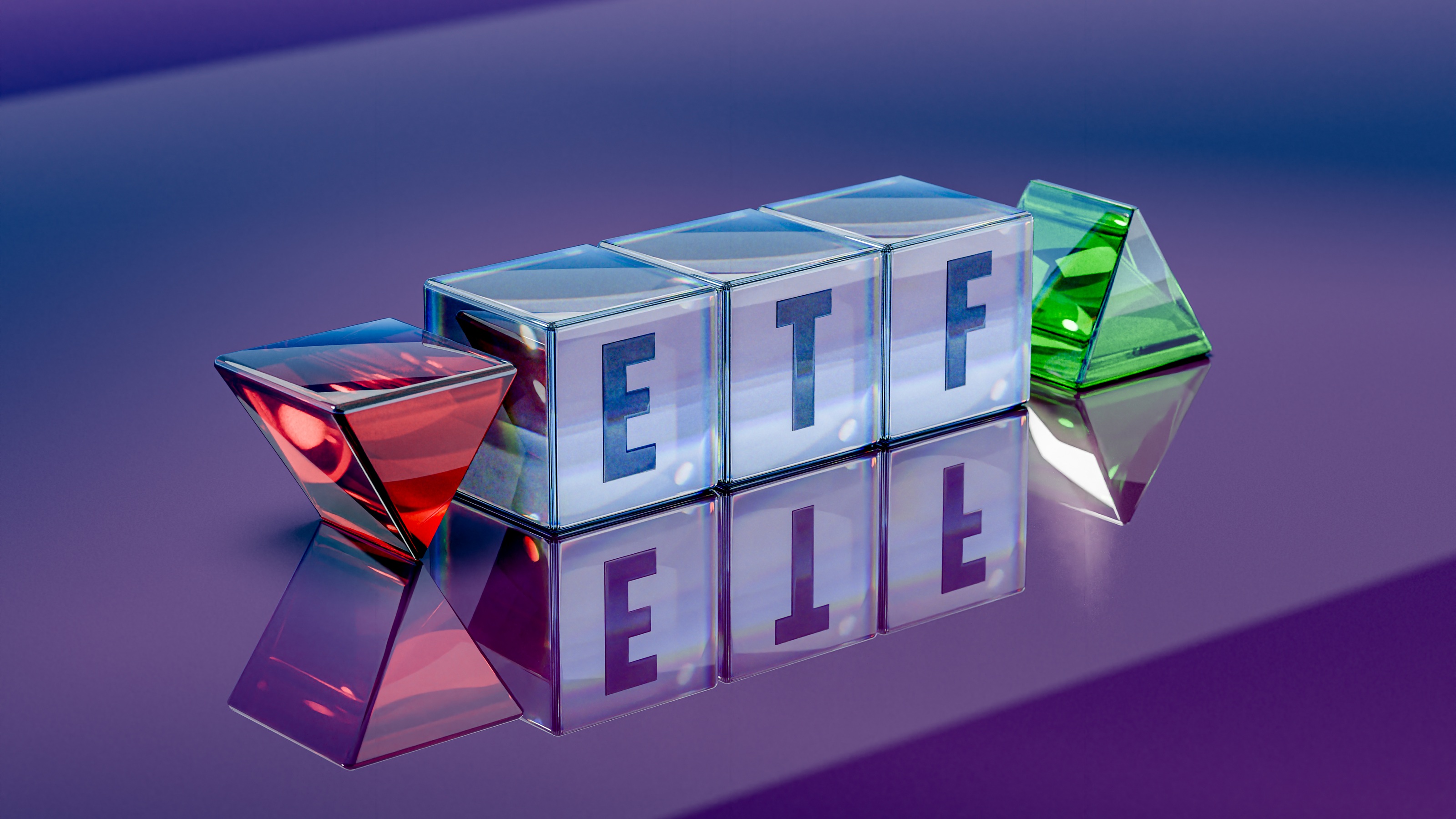Debunking Three Myths About Defined Outcome ETFs (aka Buffered ETFs)
Defined outcome ETFs offer investors a middle ground between traditional equity and fixed-income investments, helping provide downside protection and upside participation. Risk-averse clients and those nearing retirement might find them the most valuable.


The defined outcome exchange-traded fund (ETF) market has exploded in recent years, with assets growing from virtually nothing a decade ago to more than $70 billion today.
But despite their growing popularity, this investment category remains widely misunderstood by both advisers and investors.
Some view defined outcome ETFs as too complex for average portfolios, while others see them as silver bullets that have the potential to eliminate risk entirely.
From just $107.88 $24.99 for Kiplinger Personal Finance
Become a smarter, better informed investor. Subscribe from just $107.88 $24.99, plus get up to 4 Special Issues

Sign up for Kiplinger’s Free Newsletters
Profit and prosper with the best of expert advice on investing, taxes, retirement, personal finance and more - straight to your e-mail.
Profit and prosper with the best of expert advice - straight to your e-mail.
The reality lies somewhere in between. Advisers who understand how these products actually work can use them strategically to help address specific client needs.
Kiplinger's Adviser Intel, formerly known as Building Wealth, is a curated network of trusted financial professionals who share expert insights on wealth building and preservation. Contributors, including fiduciary financial planners, wealth managers, CEOs and attorneys, provide actionable advice about retirement planning, estate planning, tax strategies and more. Experts are invited to contribute and do not pay to be included, so you can trust their advice is honest and valuable.
The mechanics of defined outcome ETFs
Defined outcome ETFs (also referred to as buffered ETFs) promise specific return profiles over predetermined time periods, usually one to two years. Fund managers use options strategies to deliver outcomes that fall between traditional equity and fixed income investments.
In most cases, the fund includes a broad equity index while simultaneously buying protective puts and selling call options to create what's essentially a collar strategy packaged as an ETF with some additional subfeatures depending on the desired outcome.
This structure creates three key characteristics that differentiate them from traditional investments:
Downside protection. While risk can never be 100% eliminated, defined outcome ETFs offer various ways to help mitigate risk through the use of buffers, barriers and floors.
Upside participation. Unlike traditional principal-protected products, defined outcome ETFs allow investors to participate in market gains up to a predetermined cap, usually ranging from 8% to 15% annually, or in some other cases, you can get an "uncapped" profile while giving up some initial gains on the first few percentage points.
Time sensitivity. The protection and participation features apply only if the ETF held for the full outcome period. Selling early can potentially expose you to some or all of the volatility of the underlying reference assets. It's usually somewhere in between, depending on the time left.
Common misconceptions
Many advisers hesitate to recommend defined outcome ETFs to individual investors because of persistent myths and misunderstandings about their complexity and suitability. Understanding the facts helps separate legitimate concerns from unfounded fears.
Myth No. 1: They're too complex for average investors.
While the underlying options mechanics are sophisticated, the end result is straightforward: known upside potential with limited downside risk over a specific timeframe.
Investors don't need to understand options theory any more than they need to understand bond mathematics to own fixed income funds.
Myth No. 2: The fees are prohibitively high.
Expense ratios average 0.78%, higher than broad index funds but reasonable given the active options management required.
More importantly, the fee structure is transparent and predictable, unlike some structured products with hidden costs.
Myth No. 3: They eliminate all investment risk.
Defined outcome ETFs still carry market risk within their protection parameters. If the underlying index falls 20% and the ETF has 10% downside protection, investors still lose 10%.
There's also a risk that protection may not apply if the fund is sold before the outcome period ends.
Strategic applications in client portfolios
Defined outcome ETFs work best when used strategically rather than as core holdings, addressing specific client concerns that traditional asset allocation struggles to solve.
Consider clients approaching retirement who worry about market timing and sequence of returns risk. They face a challenging dilemma: They need continued equity exposure for growth, but they can't afford significant losses that might derail their retirement plans.
Defined outcome ETFs can bridge this gap between accumulation and distribution phases, providing meaningful upside participation while limiting the downside.
These products offer a different kind of value for anxious clients who struggle to stay invested during volatility. There's a psychological benefit to knowing the maximum loss, and this benefit often outweighs the opportunity cost of capped returns.
Interested in more information for financial professionals? Sign up for Kiplinger's new twice-monthly free newsletter, Adviser Angle.
Rather than watching nervous clients bail out of the market during corrections, advisers can use defined outcome ETFs to help keep them invested with downside protection that can help provide emotional comfort.
Defined outcome ETFs also serve as effective tactical allocation tools. Rather than trying to time the market with cash positions that earn nothing, advisers can use these products to maintain equity exposure while providing some protection during uncertain periods.
This approach can help keep clients invested in growth assets while acknowledging legitimate concerns about market conditions.
Implementation considerations
Success with defined outcome ETFs requires careful attention to timing and client communication. Unlike traditional mutual funds that can be purchased anytime, these products work best when initiated near the beginning of their outcome periods.
The protection and participation features reset with each new series, typically launching quarterly. Advisers should track upcoming launches and time purchases accordingly, rather than buying at random points during the outcome period.
Client education is equally important. Investors need to understand that these products are designed to be held for specific timeframes and that early redemption can expose them to options volatility that undermines the protection features.
Setting appropriate expectations
Defined outcome ETFs represent a middle ground between the full upside potential of traditional equity investing and the capital preservation focus of fixed income. They are most valuable for investors who prioritize downside protection over maximum return potential.
Investors need to be aware that there is a trade-off of capped upside participation for protection against significant losses. During strong bull markets, traditional index funds will outperform, while protection features provide meaningful value in severe bear markets.
Advisers would be wise to position these products as tools for specific situations rather than replacements for traditional asset allocation. They work well for risk-averse clients, those approaching major financial transitions or as tactical allocations during periods of heightened uncertainty.
As always, the key is matching the tool to the client's specific needs and timeline. For investors who understand the trade-offs and can commit to the outcome period, defined outcome ETFs offer a compelling way to participate in market growth while managing downside risk in ways traditional portfolios cannot replicate.
AE Wealth Management, LLC (AEWM) is an SEC Registered Investment Adviser (RIA) located in Topeka, Kansas. Registration does not denote any level of skill or qualification. Information regarding the RIA offering the investment advisory services can be found on brokercheck.finra.org. Investing involves risk, including the potential loss of principal. No investment strategy can guarantee a profit or protect against loss in periods of declining values. The personal opinions expressed by Ben Sullivan are his alone and may not be those of AE Wealth Management or the firm providing this report to you. This information is not intended to be used as the sole basis for financial decisions, nor should it be construed as advice designed to meet the particular needs of an individual's situation. None of the information contained herein shall constitute an offer to sell or solicit any offer to buy a security or insurance product. CFP Board owns the certification marks CFP®, CERTIFIED FINANCIAL PLANNER™, and CFP® (with plaque design) in the U.S. 4809206 – 9/25
Related Content
- Investment Management: A Return to Simplicity
- Addressing Your Clients' Emotional Side: Communication Techniques for Financial Advisers
- The Hidden Risk Lurking in Most Retirement Plans: Human Behavior
- How Advisers Can Steer Their Clients Through Market Volatility (and Strengthen Their Relationships)
- How Financial Advisers Can Build Retiring Clients' Confidence
Profit and prosper with the best of Kiplinger's advice on investing, taxes, retirement, personal finance and much more. Delivered daily. Enter your email in the box and click Sign Me Up.

Ben joined AE Wealth Management in early 2017 after working for a local accounting firm. He served advisers on the trade desk and as a director of wealth before becoming vice president of wealth management in 2022. Ben has passed the Series 7, 24, 66 and is a CFA® charterholder and a CFP® professional. Ben graduated from York College, where he played soccer. He spends his free time with his wife, Maggie, and their son, Declan.
-
 Original Medicare vs Medicare Advantage Quiz: Which is Right for You?
Original Medicare vs Medicare Advantage Quiz: Which is Right for You?Quiz Take this quick quiz to discover your "Medicare Personality Type" and learn whether you are a Traditionalist, or a Bundler.
-
 Ask the Editor: Capital Gains and Tax Planning
Ask the Editor: Capital Gains and Tax PlanningAsk the Editor In this week's Ask the Editor Q&A, Joy Taylor answers questions on capital gains tax rates and end-of-year tax planning
-
 Time Is Running Out to Make the Best Tax Moves for 2025
Time Is Running Out to Make the Best Tax Moves for 2025Don't wait until January — investors, including those with a high net worth, can snag big tax savings for 2025 (and 2026) with these strategies.
-
 Time Is Running Out to Make the Best Moves to Save on Your 2025 Taxes
Time Is Running Out to Make the Best Moves to Save on Your 2025 TaxesDon't wait until January — investors, including those with a high net worth, can snag big tax savings for 2025 (and 2026) with these strategies.
-
 4 Smart Ways Retirees Can Give More to Charity, From a Financial Adviser
4 Smart Ways Retirees Can Give More to Charity, From a Financial AdviserFor retirees, tax efficiency and charitable giving should go hand in hand. After all, why not maximize your gifts and minimize the amount that goes to the IRS?
-
 I'm an Insurance Pro: If You Do One Boring Task Before the End of the Year, Make It This One (It Could Save You Thousands)
I'm an Insurance Pro: If You Do One Boring Task Before the End of the Year, Make It This One (It Could Save You Thousands)Who wants to check insurance policies when there's fun to be had? Still, making sure everything is up to date (coverage and deductibles) can save you a ton.
-
 Small Caps Hit a New High on Rate-Cut Hope: Stock Market Today
Small Caps Hit a New High on Rate-Cut Hope: Stock Market TodayOdds for a December rate cut remain high after the latest batch of jobs data, which helped the Russell 2000 outperform today.
-
 What Investors May Face in the New Year: Interview
What Investors May Face in the New Year: InterviewKeith Lerner, the chief market strategist and chief investment officer for Truist Wealth, speaks with Kiplinger.
-
 3 Year-End Tax Strategies for Retirees With $2 Million to $10 Million
3 Year-End Tax Strategies for Retirees With $2 Million to $10 MillionTo avoid the OBBB messing up your whole tax strategy, get your Roth conversions and charitable bunching done by year's end.
-
 'Politics' Is a Dirty Word for Some Financial Advisers: 3 Reasons This Financial Planner Vehemently Disagrees
'Politics' Is a Dirty Word for Some Financial Advisers: 3 Reasons This Financial Planner Vehemently DisagreesYour financial plan should be aligned with your values and your politics. If your adviser refuses to talk about them, it's time to go elsewhere.
-
 For a Move Abroad, Choosing a Fiduciary Financial Planner Who Sees Both Sides of the Border Is Critical
For a Move Abroad, Choosing a Fiduciary Financial Planner Who Sees Both Sides of the Border Is CriticalWorking with a cross-border financial planner is essential to integrate tax, estate and visa considerations and avoid costly, unexpected liabilities.